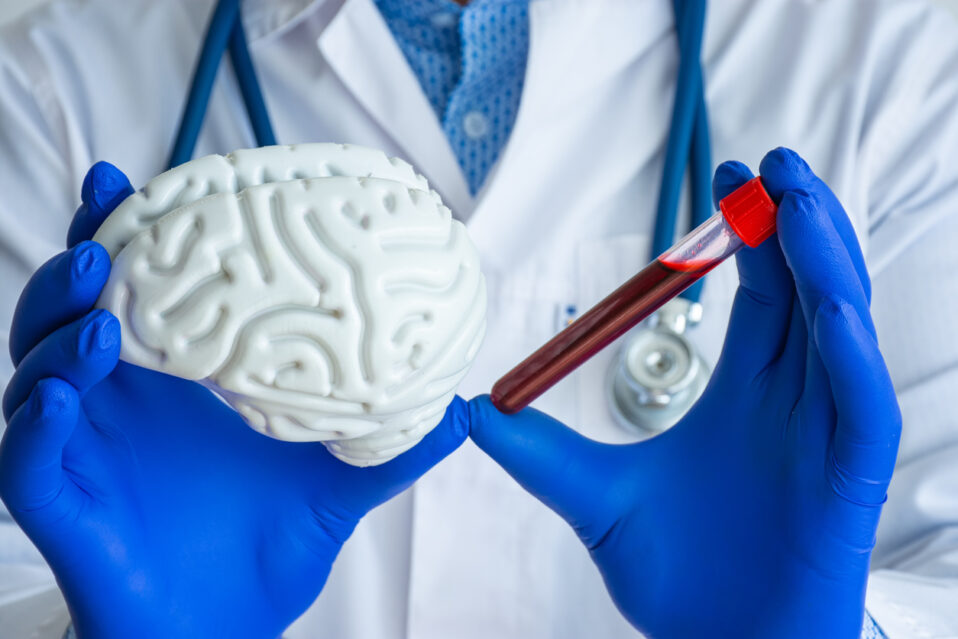Summarized by Daniel McBride, MD
A new research article has given us a fresh look at “cognitive motor dissociation.” This is a medical condition where people with serious brain injury appear to be asleep, but special tests show us they may still know what is happening around them. In fact, this new study shows that it may be even more common than we think. To better understand cognitive motor dissociation, first we will review brain injury and how to test brain activity. After a serious brain injury, the injured person may not wake up. Their heart is still beating and they are still breathing, but they appear to be in a deep sleep. This may be called a coma or a vegetative state. These people do not respond when asked questions or when their names are called. For a long time, doctors have been uncertain if these people still know what is happening around them. Can they hear our voices? Do they understand when their families are speaking to them? New high-tech tests are providing clues to help answer these questions. Have you ever seen a movie or TV show with a character in the hospital next to a beeping machine that “flatlines”? That machine is a type of heart monitor. It measures electrical activity in the heart. Every beep indicates one heartbeat, and the “flatline” means the heart has stopped beating. We have similar machines that can monitor activity in the brain. Stickers placed onto the head record the brain’s electrical activity. This test is called an EEG (electroencephalogram). You may have also seen an X-ray, which doctors use to take pictures of bones. There is another type of picture we can take of the brain, called an MRI (magnetic resonance imaging). The MRI uses a powerful magnet and special computers to build a 3D picture of the brain. There is even a special type of MRI, called fMRI (functional MRI), which shows us a “real time” or “live action” picture of brain activity. Using these two tests, the EEG and the fMRI, scientists are able to look at the activity of the brain. This brain activity follows certain patterns at certain times. For example, the brain shows one pattern when you are awake, and another pattern when you are asleep. The brain can show different patterns when reading, watching TV, or playing sports. But that is not the only time we see these brain patterns. Because the brain helps plan our behavior, it can show these special patterns even when you just think about an activity. For example, if you imagine throwing a baseball, your brain can show the same pattern as if you were actually throwing a ball. These brain activity patterns are called “task-based paradigms.” What does this have to do with brain injury? Remember, some people with serious brain injuries appear to be permanently asleep—in a coma, or in a vegetative state. We want to know if these people are still aware of what is happening around them. They do not seem to answer our questions or respond to our voices. But what if we use the special tests, the EEG and the fMRI? With these tests, scientists asked these people with brain injuries to perform the “task-based paradigms”—for example, to imagine throwing
a ball, or to imagine squeezing their fist. And even though these people appeared asleep, the tests showed their brain activity patterns matching the requested behaviors! This is cognitive motor association. A person appears to be in a coma, or in a vegetative state, unable to respond to the outside world, but their brains are still showing activity that suggests they can hear us. And this new study shows us that cognitive motor dissociation may happen more often than we thought. Past research showed cognitive motor dissociation in 10% to 20% of these patients, but this new study showed it in about 25% of patients. However, this study has some limitations. These tests, the EEG and fMRI, require special equipment and specially trained technicians. It is probably not possible to perform these tests on every brain injury patient who is unresponsive in a coma or a vegetative state. Also, the tests are not perfect. The two tests do not always agree with one another, and the tests may miss some brain activity in certain patients.
Nevertheless, scientists and doctors hope that this new study will help encourage further research into new methods to detect cognitive motor dissociation. One strategy may be to make the EEG and fMRI tests simpler and easier to use. Another approach could be to develop completely new tests to look for cognitive motor dissociation. The goal is to make these tests more common and improve our knowledge about this medical condition. Titled “Cognitive Motor Dissociation in Disorders of Consciousness,” this study was published in August 2024 in the The New England Journal of Medicine. The first author is Y.G. Bodien. The study looked at 353 patients at 6 hospitals in the United States and in Europe.




